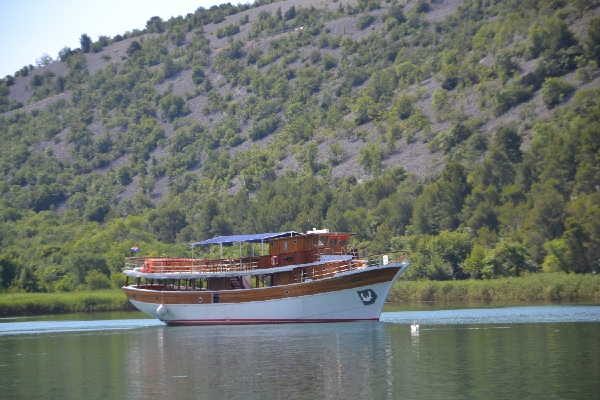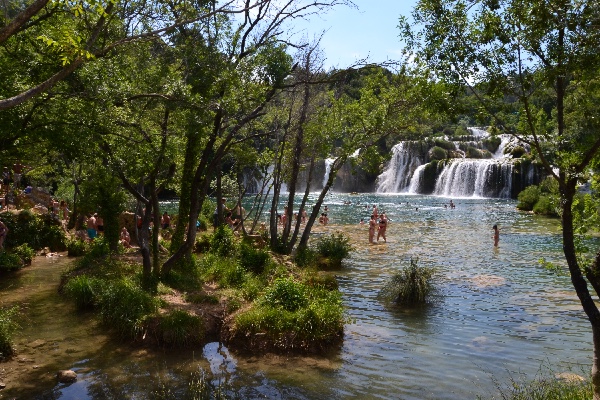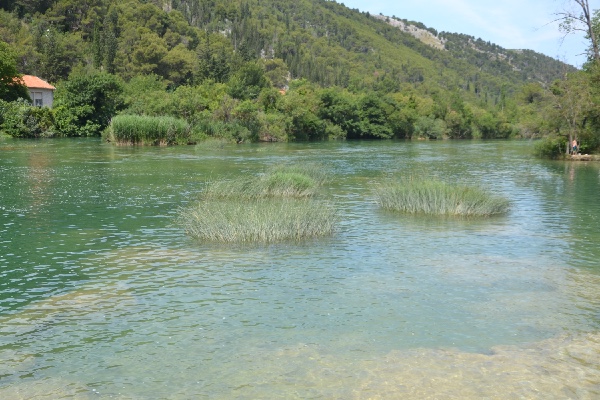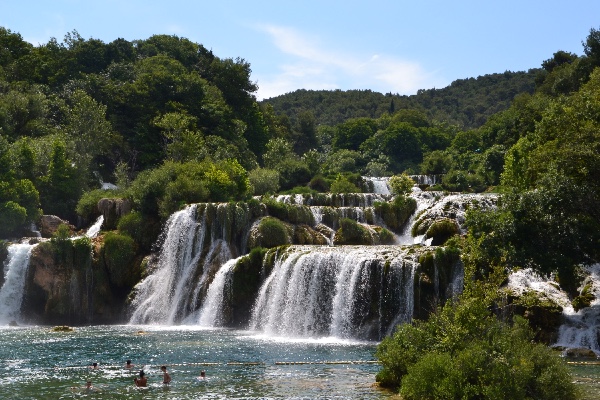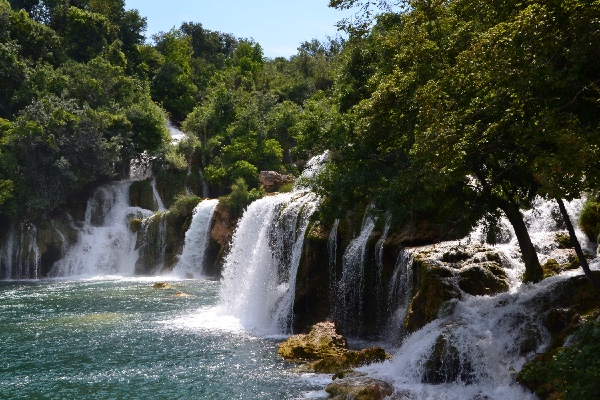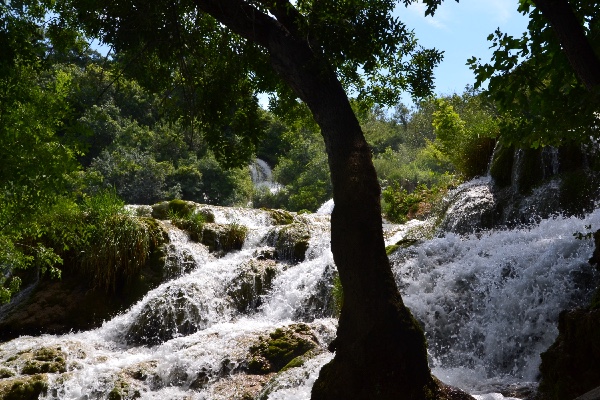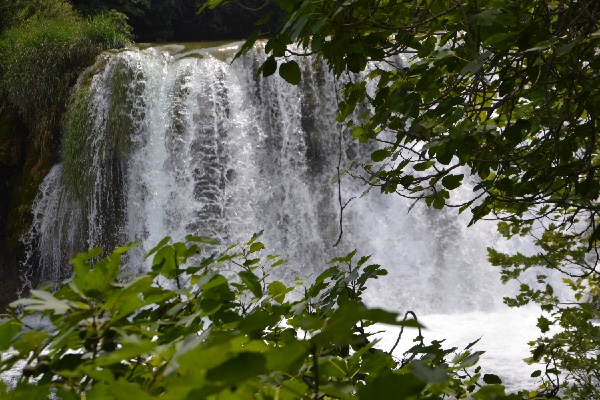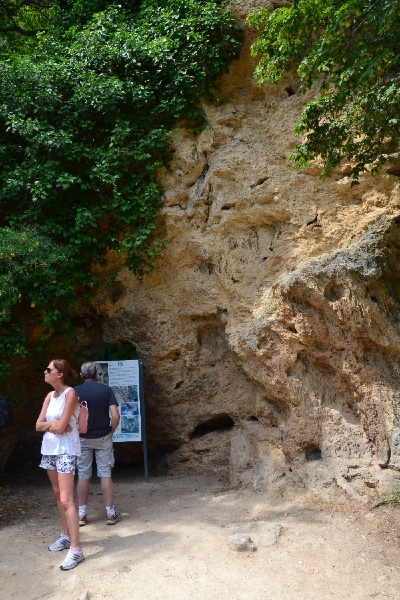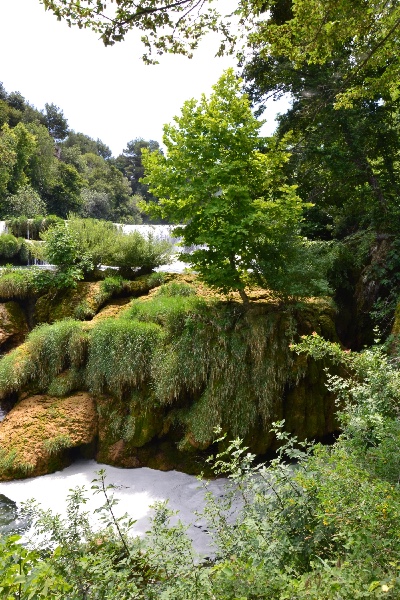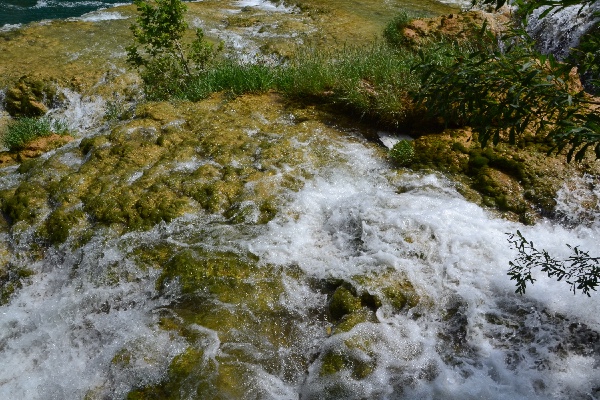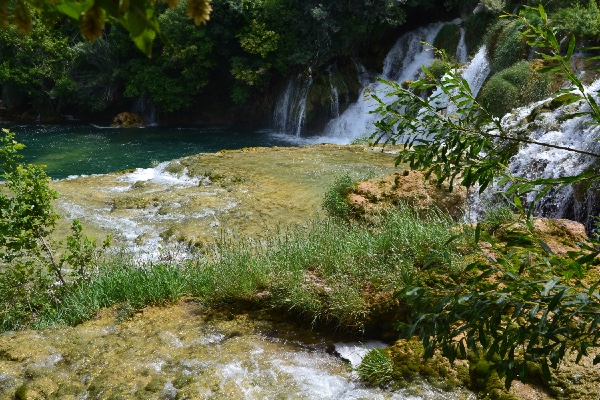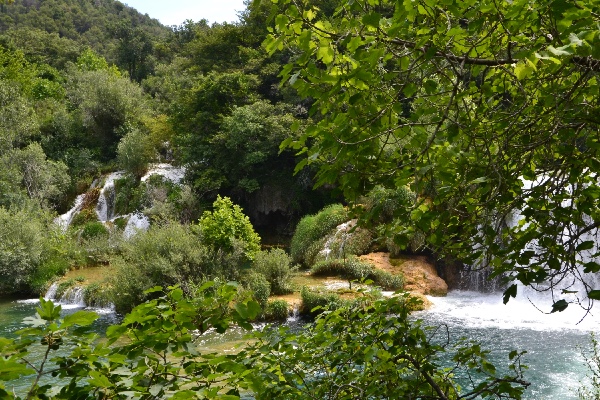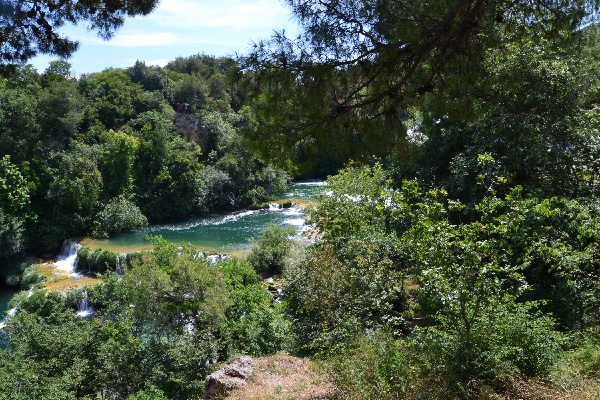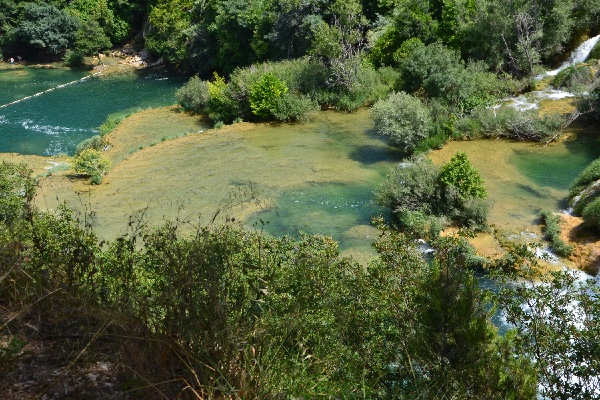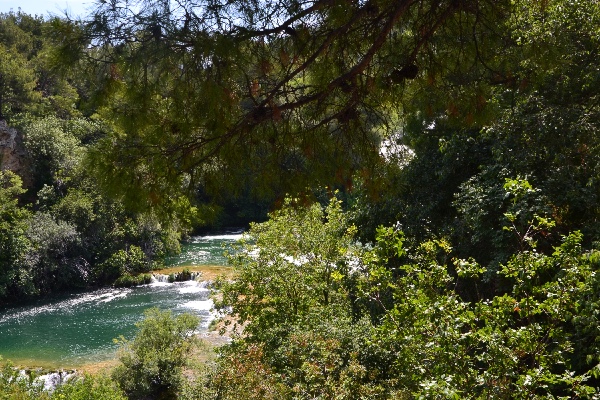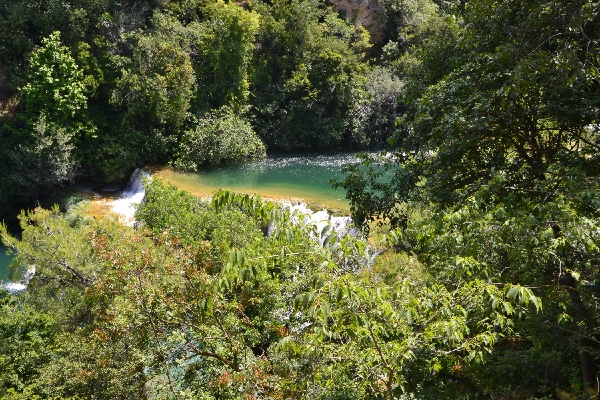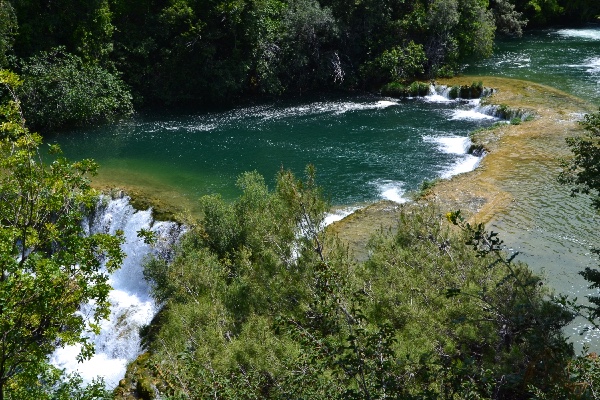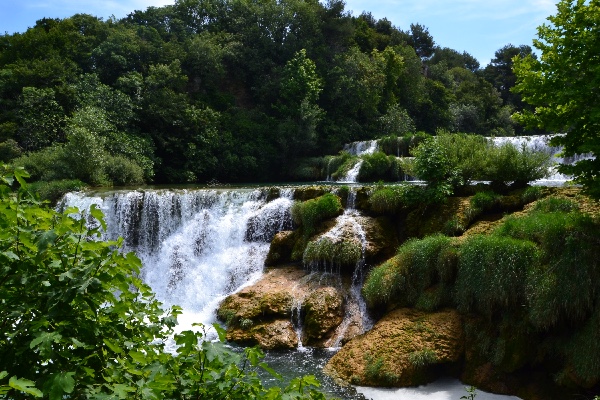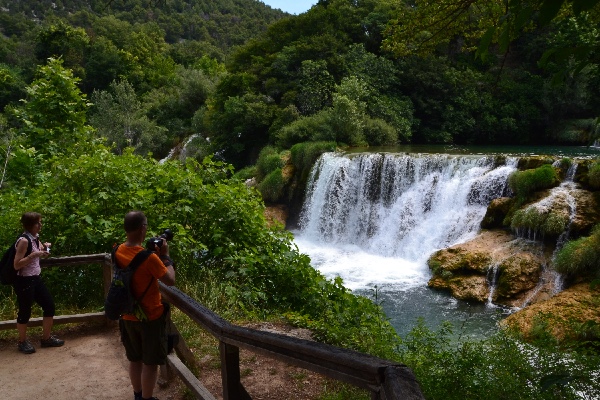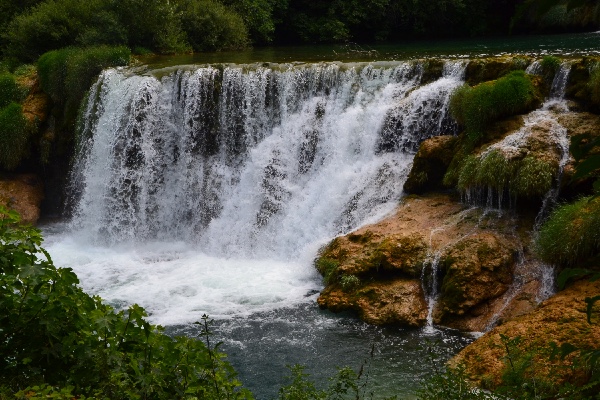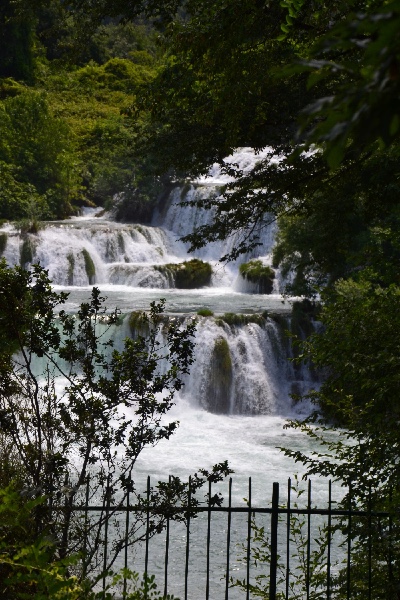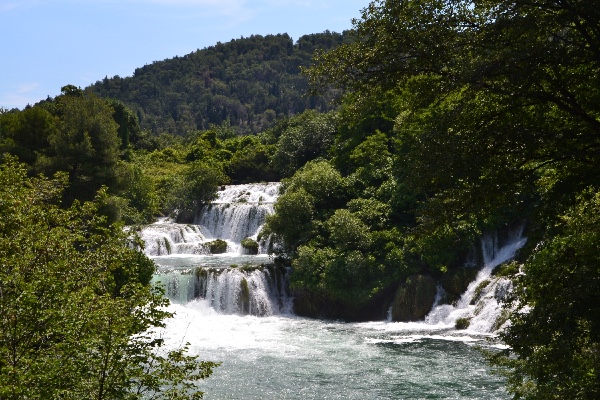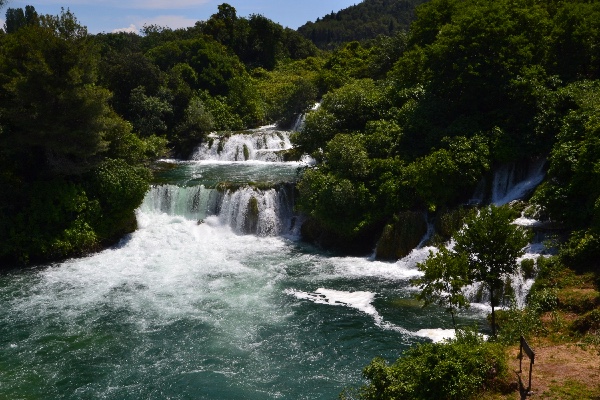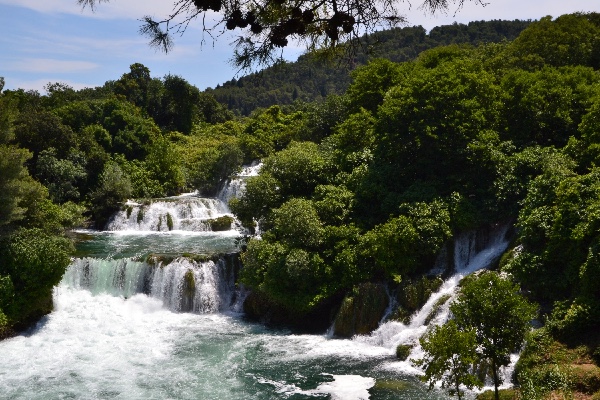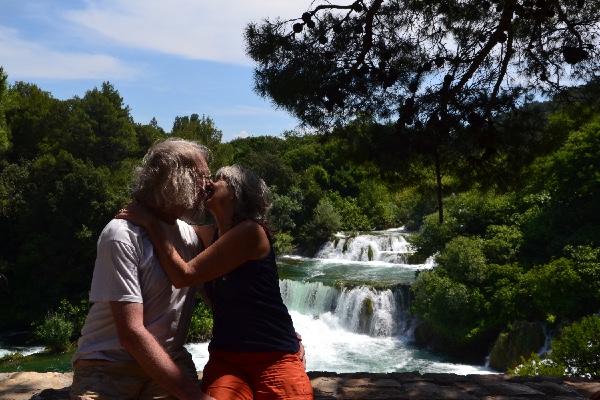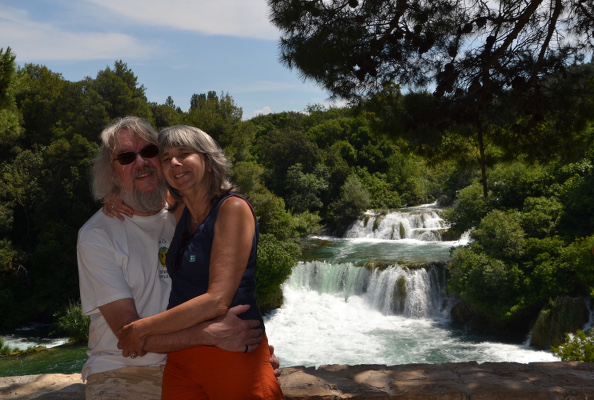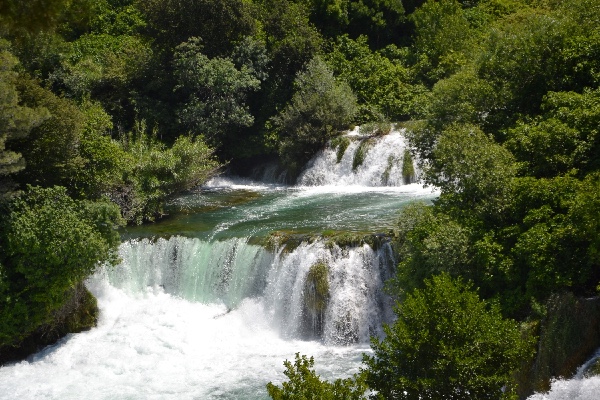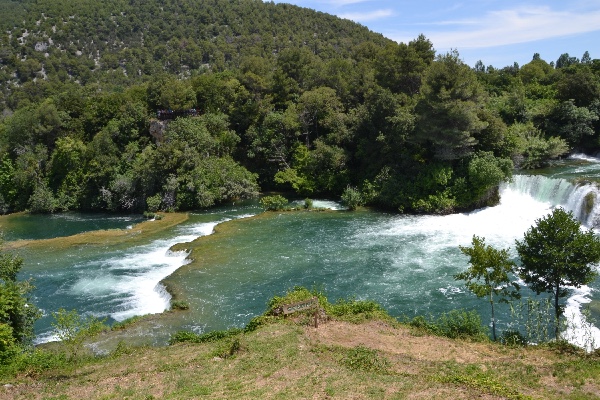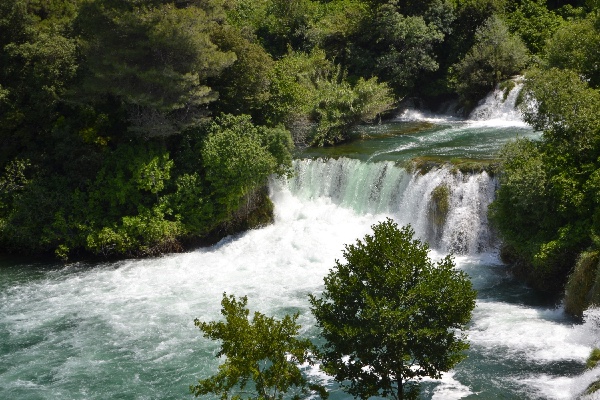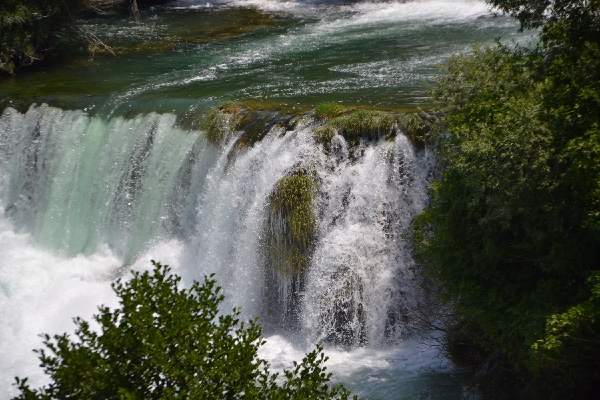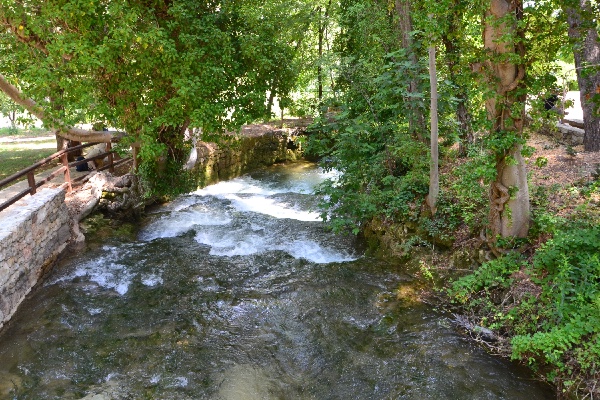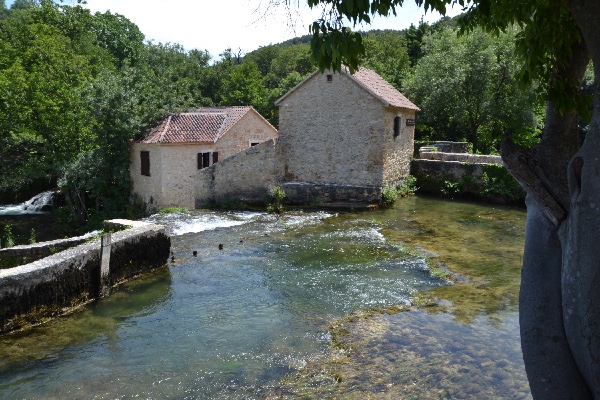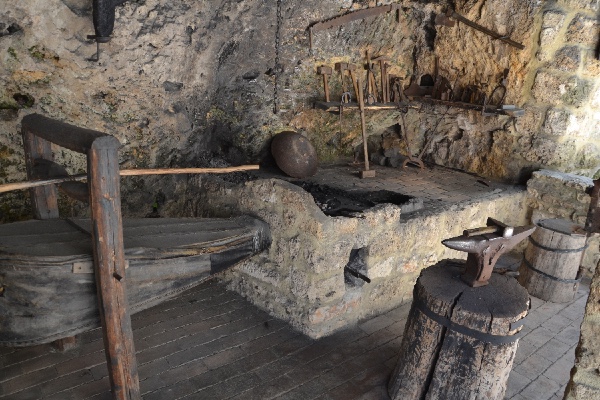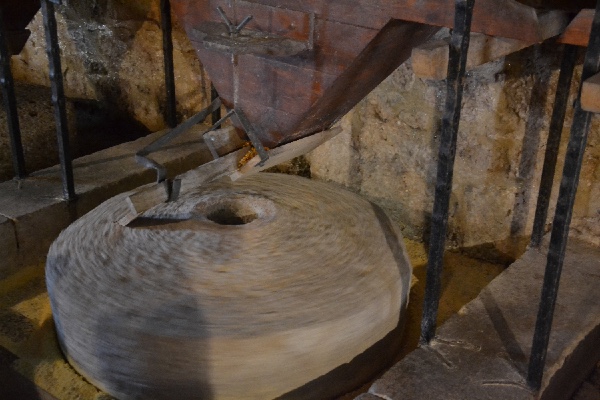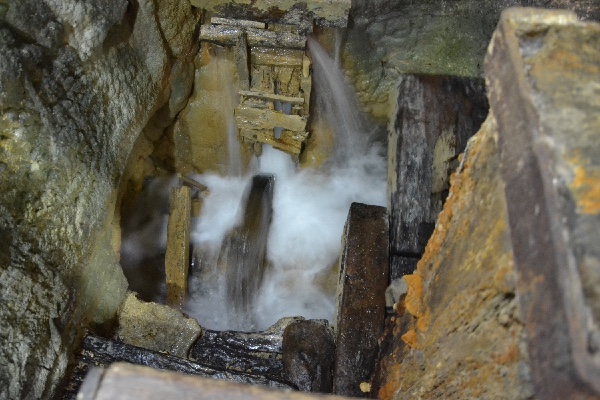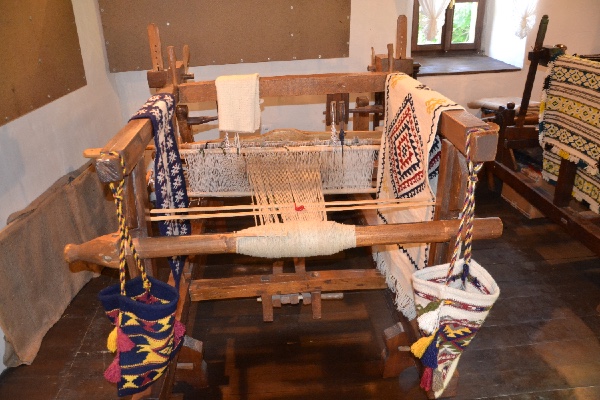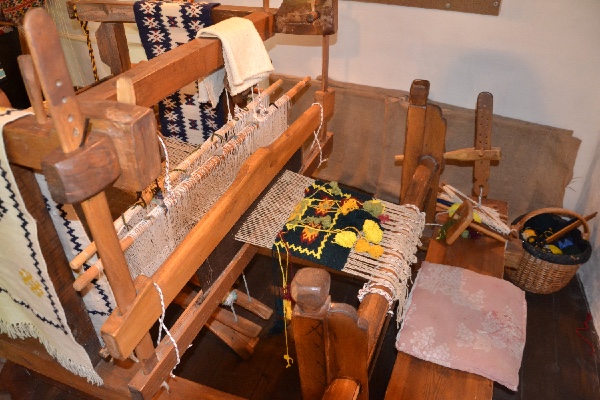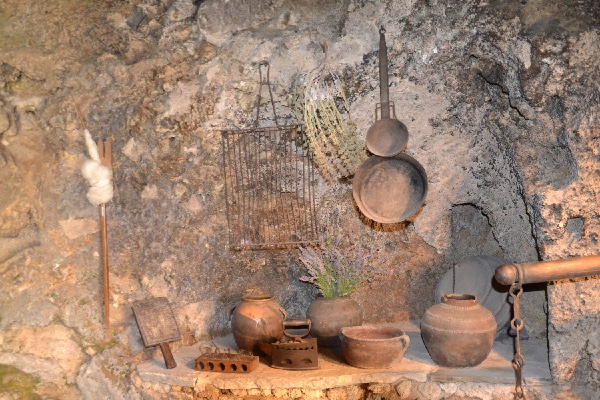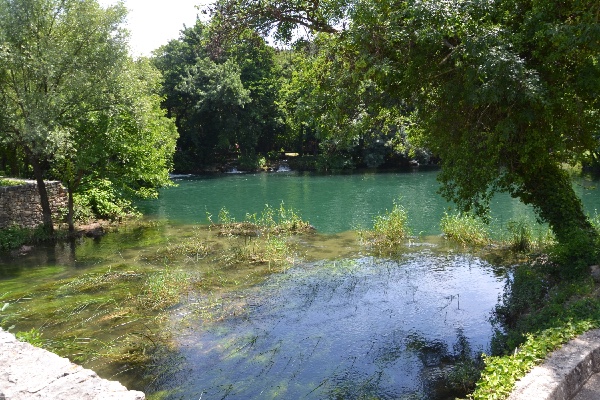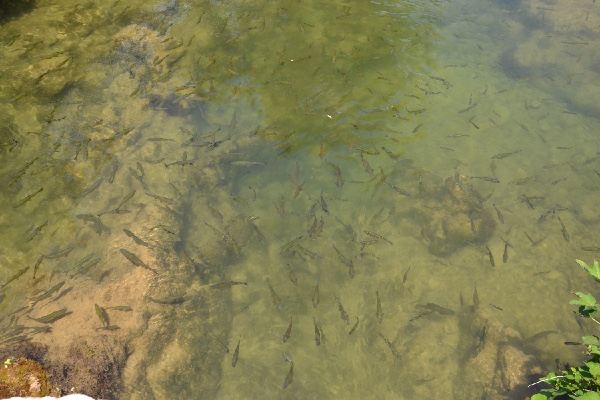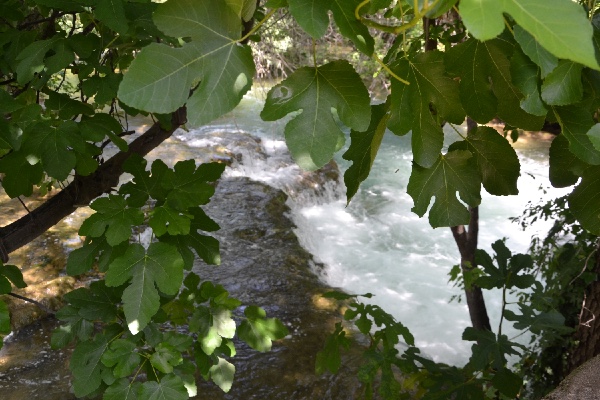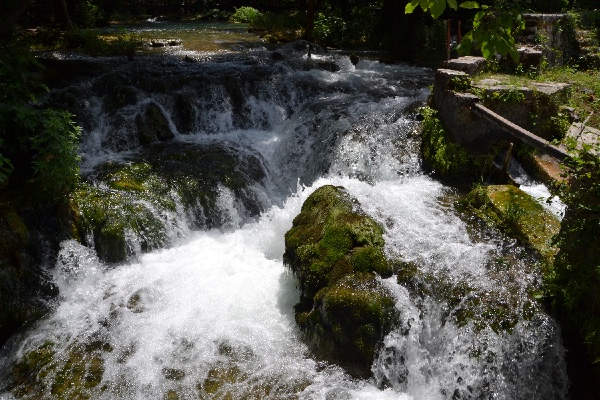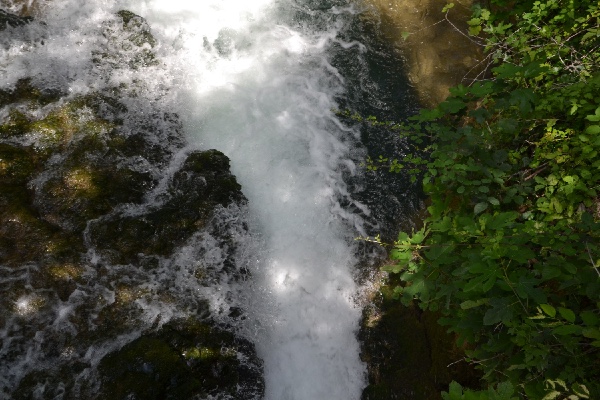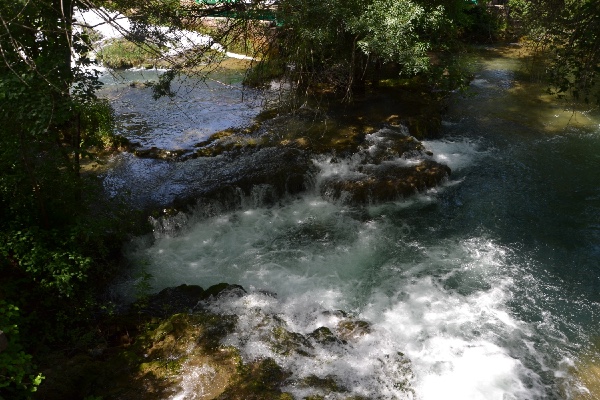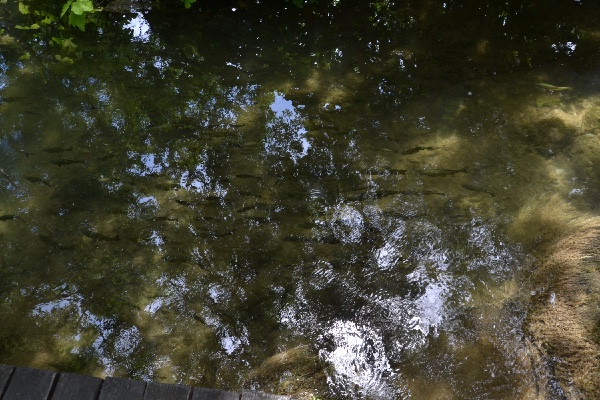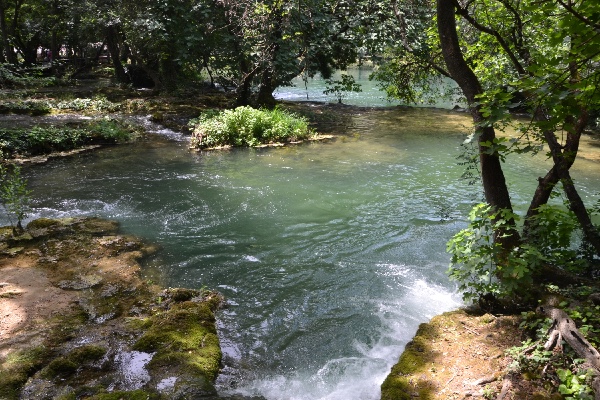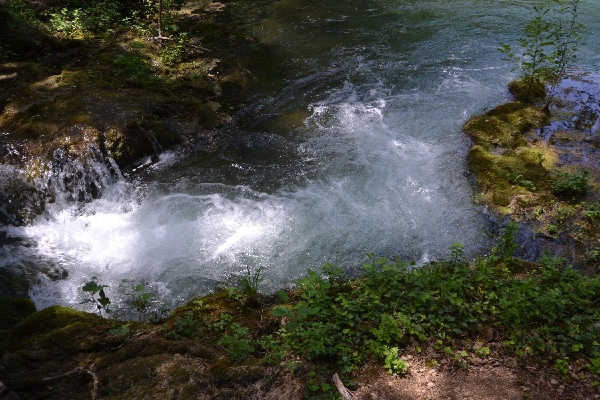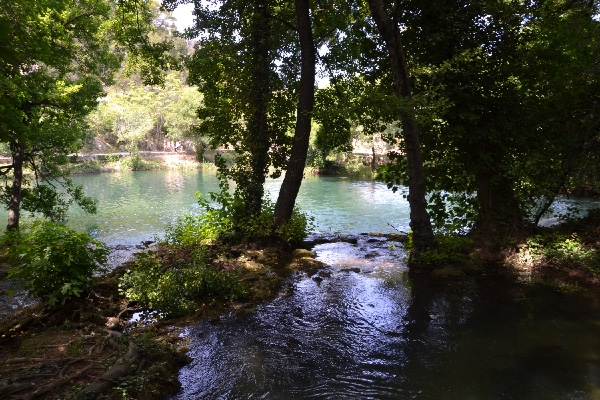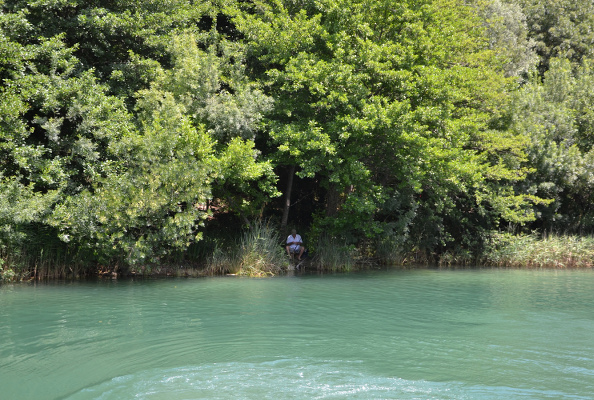Into Each Heart Some Water Falls
Krka Waterfalls
These are our favorite waterfalls in Europe, even if we haven't explored a great part of the Nacionalni park Krka in Dalmatia (Croatia). The river is born from a 22 m high waterfall, Topoljski Slap near the city of Knin. There are seven waterfalls on its way to the sea, with a total height difference of 224 meter, while the river is only 73 km long. The lower third of the river has brackish water, due to the tide influence from the Adriatic Sea.A boat links Skradin on the lake below to the lowest part of the park. We visited mainly the last waterfall on the river, Skradinski buk, and the area above it with a watermill and several houses with old crafts. Further up the river, there are the Visovac Monastery (Roman) and the Krka Monastery (Orthodox). There are also many trails through the park, guided tours to learn more about its special flora and fauna, etc.
If was funny to see so many people bathing in the water right under the big waterfall. Higher up, the Park Rangers didn't allow people to cool their feet in the water. That is quite understandable because of the delicate balance in the water between temperature, alkalinity and amount of calcium solved in the water.
Skradinski Buk
Plants building dams
What's so special about these falls, is that there's so much vegetation lining them.The waterfalls in this region, at Plitvice, on the Una and the Krka, exist in very special circumstances, a co-operation of physical, chemical and vegetation factors. To begin with, there is a warm climate that helps the chemical reactions taking place in the water. We are here in a Karst region, with much calcium carbonate in the rocks, lime that is solved into water that passes through the rocks, like we know from caves with stalagmites and stalactites. The Krka region is a paradise for speleologues. So we have water that is oversaturated with calcium carbonate, that is quite free from organic matter and that flows at 0.5 to 3.5 meters per second. The water is alkaline (pH >8).
But unlike the 'lifeless' creation of stalactites, the vegetation around the falls helps to build barriers against the water. The bacteria, algae and mosses receive the deposits of lime on their surface, lined with small shards like animal shells, particles of limestone or dolomite. The living organisms catch the calcium and form new layers of travertine that are intermingled with the algae, mosses and small plants. This process is dynamic and goes on continuously, slowly changing the form of the falls, rivers and pools. It's another force, next to erosion, that builds the landscape. Travertine is also formed at geothermal springs, like in Yellowstone National Park*.
Second level on Skradinski Buk
Next level for the Panorama deck
Smithy, watermill and looms
Fleeting water -and fish- everywhere
All photos, movies, and texts (except those signed by Touché Guimarães) were made/written by Guy Voets, and everything is published under the Creative Commons BY-NC-SA license (attribution, non-commercial, share-alike).
Text in brown are links, either to another part of the website, or away from it. When marked with a *, the link goes outside, indicates where it takes you (e.g. wikipedia, youtube,...) in the left bottom corner of the page, and a new tab or page opens.
Text in brown are links, either to another part of the website, or away from it. When marked with a *, the link goes outside, indicates where it takes you (e.g. wikipedia, youtube,...) in the left bottom corner of the page, and a new tab or page opens.
You can click on most photos to start a manual Lightbox 2* show with larger versions of the photos on the page. Once the show starts, you can click on the right arrow to go to the next photo, left arrow for the previous one. The x at the bottom right stops the show and brings you back to the page. Each photo also has a legend, at bottom left.
photos from 2013

photos from 2013

